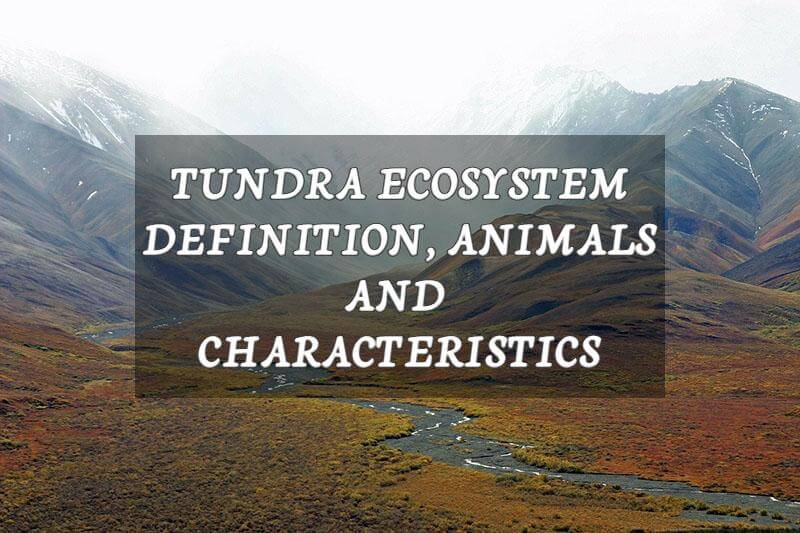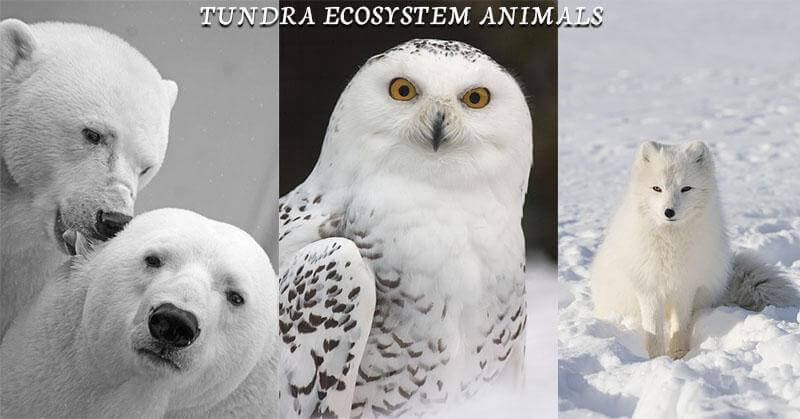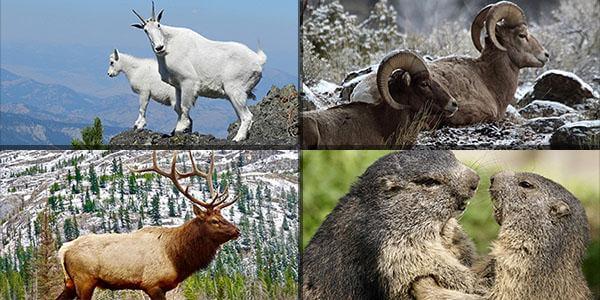Tundra Ecosystem Definition – Characteristics of Tundra Ecosystem and Animals
Tundra ecosystem definition, animals, and characteristics
The Tundra ecosystem is one of the unique ecosystems of the planet. The adverse climatic conditions of tundra regions like dry winds, meager precipitation, and extreme cold make it a unique and desert-like ecosystem with treeless fields. These harsh climatic conditions of the tundra region make the survival of plant and animal species quite severe.

Approximately, 20% of Earth’s surface is covered with tundra ecosystem. Tundra region is covered with snow during most of the months in a year. However, the summer months bring a beautiful view in the tundra region with the blossom of various species of wildflowers.
Tundra is one of the important ecosystems found on the planet. To know more interesting things about the tundra ecosystem, we will go through this article.
Table of Contents
Tundra Ecosystem Definition
A barren land characterized with black-messy soil permanently frozen dominated with vegetation of lichens, mosses, herbs & shrubs is known as tundra ecosystem.
In the tundra region, there are two distinct seasons – the long winter season and the short summer season. The long winter season may last up to 8 months in the tundra region. Tundra region experiences long nights during winter months and long days during summer months.
Tundra Ecosystem Types
Before going into characteristics of tundra ecosystem, we will go through two types of tundra regions found on Earth – Arctic Tundra region and Alpine tundra region –
The Arctic tundra region is found between the North Pole and the taiga region (also known as coniferous forests). The main feature of Arctic tundra is extreme cold and frozen land throughout the year. The Arctic Tundra ecosystem mostly includes North America (Northern Alaska, Canada, Greenland), Northern Europe (Scandinavia), Northern Asia (Siberia), etc. Alpine tundra region can be found in high mountain tops above tree line anywhere across the globe. Unlike Arctic tundra, Alpine tundra is covered with snow for most of the year rather than frozen year-round. The Alpine tundra ecosystem is commonly experienced in these regions – North America (Alaska, Canada, USA, Mexico), Northern Europe (Finland, Norway, Russia, Sweden), Asia (Southern Asia (Himalayan Mountain), Japan (Mountain Fuji), Africa (Mountain Kilimanjaro), South America (Andes Mountains), etc.
Tundra Ecosystem Characteristics
Various characteristics of tundra ecosystem is given below in points –
Extreme climatic conditions
- Tundra ecosystem experiences extreme cold almost throughout the year. During winter months, the average temperature of the Arctic Tundra region ranges from -25 degrees Fahrenheit to 40 degrees Fahrenheit.
- On the other hand, the Alpine tundra region is a bit warmer as compared to the Arctic tundra region. The average temperature of Alpine tundra ranges from 0 degrees Fahrenheit to 54 degrees Fahrenheit.
- During the summer season, the living organisms of the tundra ecosystem get a bit of relaxation due to a short period of slightly-warm temperatures.
- During summer, the Alpine tundra region experiences a growing season of almost 180 days, whereas the Arctic tundra region experience 50-60 days approximately.
Permafrost
- Permafrost can be considered as a characteristic that defines the tundra ecosystem efficiently. A long-lasting frozen layer of soil and other organic matter found in the tundra ecosystem is usually termed as permafrost.
- Permafrost plays a vital role in the poor vegetation of the tundra ecosystem. This is the primary reason to explain why trees cannot survive in the tundra region.
- In some places of the tundra ecosystem, the permafrost is spread up to hundreds or sometimes thousands of feet in depth under the Earth’s crust. It is quite surprising, but it is an important characteristic of the tundra ecosystem. During the summer season, the permafrost partially melts, creating small ponds on the topmost layer of permafrost.
Poor vegetation
- One of the major reasons for poor vegetation in the tundra ecosystem is permafrost. Due to permafrost, there is no deep-root system in the tundra region to support vegetation.
- Apart from this, the other adverse climatic conditions like very low precipitation, extreme cold, etc. also acts as a barrier to the growth of vegetation in the tundra ecosystem.
- There are very few species of plants that can survive in the extreme weather conditions of the tundra region.
- Some of the commonly seen plants of the tundra ecosystem include lichen, sedges, shrubs, moss, liverworts, grass, various flowers, etc. These plants help to fulfill the food requirement of animal species that live in the tundra ecosystem.
Land of Midnight Sun
- The midnight sun is a phenomenon commonly seen in the Arctic Tundra ecosystem. This phenomenon is caused when the sun does not disappear entirely below the horizon point.
- The countries that witness the phenomenon of midnight sun include Finland, Greenland, Sweden, Canada, Norway, Iceland, Denmark, Russia, etc.
- The midnight sun can be seen in the summer season in the Arctic region. Tundra region also experiences a period in the winter season when the sun does not rise above the horizon point at all. This phenomenon generates 24 hours of sunlight in the summer months and 24 hours darkness in winter months.
- This phenomenon (24 hours darkness in winter and 24 hours sunlight in summer) is quite different as compared to the equatorial region of the Earth. The organisms living near Earth’s equator experience almost equal schedule of day & night, i.e., 12 hours throughout the year.
Meager precipitation
Extremely low precipitation and dry climate are some of the major characteristics of the tundra ecosystem. Tundra region experiences average precipitation less than 15 inches annually. Out of the total precipitation, only 2/3 falls in the form of rain.
Tundra Ecosystem Animals
The animals of the tundra ecosystem are adapted to cold and harsh climatic conditions of that region. The animals of the tundra ecosystem are observed quite active during summer months as compared to winter months.
Summer months seems like the perfect season for the animals and many species of insects to perform necessary activities.

For example – in the summer season, most of the birds migrate from the south, various insects of the tundra ecosystem hatch their eggs in summer months, some species of mammals come out of hibernation, etc.
The animals living in the tundra ecosystem either migrate to warmer areas or migrate to the south to get protection against the harsh climate.
For example – Few birds like caribou migrate to the south for the winter season. Some mammals like musk ox also migrate to warmer areas in winter to insulate against cold, whereas some small mammals like squirrels protect themselves from the cold by burrowing and hibernating during cold and harsh weather of winter.
However, many animals have perfectly adapted to the tundra climate. Few animals like arctic hare, ermine, arctic fox, etc. change their coat according to the season, i.e., brown during summer and white during winter. Few other Tundra animals like snowy owl, ptarmigans, musk oxen, etc. look more active in winter.

During summer, mosquitoes are quite common to see in wetland areas of the tundra region. Different species of animals become more active in summer, especially that comes from hibernation and migration from the south.
The animals of the Arctic tundra ecosystem include a snowy owl, reindeer, polar bear, lemmings, wolverines, black flies, white foxes, etc. The animals of alpine tundra protect themselves from cold during winter by migrating to lower elevations. The animals of the Alpine tundra ecosystem mostly include mountain goat, elk, springtail, butterflies, marmots, bighorn sheep, grizzly bear, beetle, grasshopper, etc.
If you want to add more points comment below, we will surely consider it. Meanwhile share this article with friends, kids, and family.